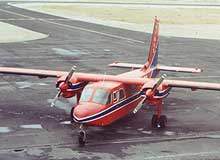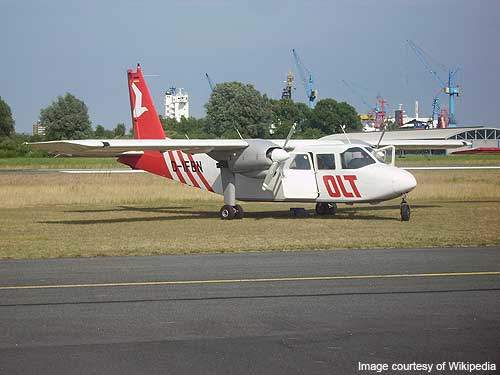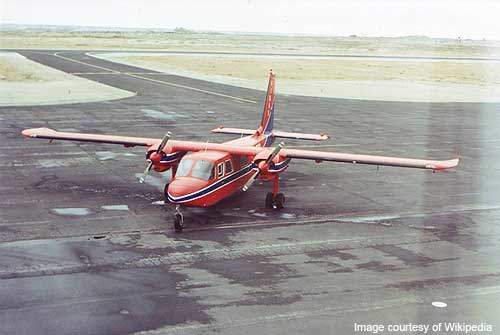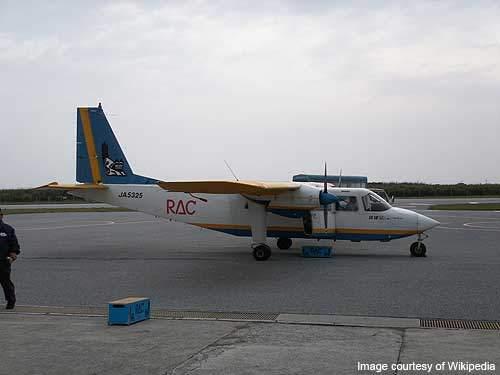The BN-2 Islander is a multirole light utility aircraft designed and built by Britten-Norman to replace DH-89A Dragon Rapide aircraft. Two prototypes of the BN-2 were produced at the company’s facility in Bembridge. As of March 2011, a total of 1,280 Islanders had been built, of which 750 are operational worldwide.
The maiden flight of the first prototype took place in June 1965, followed by the second in August 1966. The first prototype entered into service in April 1967 and was certified in August 1967. The second prototype was transformed into the Super Islander which is now being used as the basic version of Trislander, a variant of the BN-2.
BN-2 Islander variants
The variants of the BN-2 Islander include: BN-2A, BN-2B Defender, BN-2T, Islander ALmk1, Islander CCmk2, Maritime-Defender and BN-2A-III Trislander.
BN-2A is the maiden production aircraft built by modifying the original prototype. The modifications encompass increased take-off weight, incorporation of aerodynamic and flight equipment and large luggage compartment.
The Britten-Norman BN-2B Defender is a military version equipped with 300hp IO-540-K1B5 engines. This variant has been acquired by the British Army and police for executing urban surveillance and counterterrorism missions.
The BN-2T is a turbine islander derived from the BN-2A-26. It is powered by two 320hp Allison 250-B17C turboprop engines.
The Islander ALmk1 is an improved version, deployed by the British Army for aerial photography in Northern Ireland during Operation Banner. The Maritime-Defender is a naval version principally used to perform search and rescue, coastal patrol and fishery protection operations. The BN-2A-III Trislander is an extended version of the BN-2A. Powered by three 260hp Lycoming O-540-E4C5 piston engines, the variant can conciliate 18 passengers in its spacious cabin.
Orders and deliveries
The British Army Air Corps placed an order for five BN-2T Turbine Islanders in 1989 to replace its obsolete DHC-2 Beavers. Three aircraft were equipped with AN/ALQ-144 jamming pod, an IRCM suite supplied by Lockheed Martin and Zeiss Trilens 80mm camera. The remaining two were fitted with COMINT system for communications purposes.
Britten-Norman signed a £10m contract with UK forces in 2003 to render three Defender 4S ALmk1 aircraft for deployment in Iraq.
Design
John Britten and Desmond Norman began the BN-2 Islander design in 1963. The aircraft is of cantilever monoplane design with square shaped fuselage section. It was designed to carry out a wide range of missions including aerial survey, crop dusting, environmental protection, transportation, air ambulance, fisheries protection, policing and parachuting.
The STOL capability enables the Islander to operate from unprepared airstrips or short runways or grassy airfields.
BN-2 features
The BN-2 features a robust airframe, blister windows, elevator and rudder trim tabs and fixed landing gear fitted with two main wheels and a steerable nose wheel. The aircraft houses three doors on either sides of the fuselage for entry and exit of the passengers. It is also fitted with low-pressure tyres to execute soft-field missions.
Flight deck
The Islander boasts a one-crew flight deck enclosed with a glass canopy. It is equipped with 14in colour displays, primary flight controls, dual controls, push pull rods and modern avionics systems supplied by Garmin, Chelton, Collins, Bendix King and Sagem.
Cabin
The large cabin of the BN-2 seats nine passengers in feeder liner configuration. It can also carry 700kg of cargo when operated as freight transport aircraft. The cabin houses a flat cabin floor, leather seats, onboard oxygen generation system, large baggage compartment, ventilators and entertainment systems.
The length and width of the cabin are 2.9m and 1.24m respectively. The height is 1.09m.
Engines
The Islander is powered by two Textron Lycoming O-540-E4C5 piston engines, each of which can produce 195kW of output power. It is a six-cylinder, horizontally opposed air cooled engine designed and built by Textron Lycoming Engines, US.
It is equipped with overhead valves, fuel injection system, ELECTRO, MHB-6016 starter, carburettor, spark plug and hydraulic pump drive. The dry weight of the engine is 199kg.
Performance
The BN-2 Islander can climb at the rate of 4.91m/s. The maximum and cruise speeds of the aircraft are 273km/h and 257km/h respectively. The stall speed is 64km/h.
The range is 1,400km and the service ceiling is 4,024m. The aircraft weighs around 1,667kg and its maximum take-off weight is 2,994kg.





